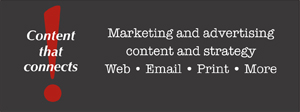There’s always been a link between buying stuff and sex, with people acquiring material goods as a substitute for something you can’t do at Walmart, and I’m not talking about walking around eating a Big Mac while you shop. You can already do that.
There is a new and disturbing trend that goes beyond the personal to the societal.
The rise of mobile technology has unleashed a proliferation of marketing ploys to move the user from shopper to buyer. Whether it’s texts with coupons that pop up when you pass a Starbucks doorway, or a Walmart app that lets you find things in the store without asking a sales associate, or deals at Best Buy that are only good until you walk out the door, the point is: “Buy it now, buy it now, buy it right now, oh baby please, please, buy it now.”
This messaging works. We do, in large measure, buy it now. Just like speed dating and instant hook-ups (and who knows what else these crazy kids are doing these days) have replaced a chance meeting followed by casual dating followed by a real relationship that might or might not end up with legal involvement, so has buying been transformed to something quicker, coarser, and ultimately less satisfying.
Some of us remember layaway. We visited the store a few times to make sure we really wanted the item in question and when we decided we did, we took it the layaway counter and made a down payment and received a card with room to record future payments. Then we came in week after week and faithfully made those payments until the magical day when the item went home with us. Finally, we proudly showed it off to friends and family, just like we’d been imagining we would, and we felt great when they told us how special it was, which they always did.
Then layaway was replaced by credit cards. Now we didn’t have to think as long or as hard before a substantial purchase because we had plenty of time to pay for it. Nor did we have to wait for the item to be ours. We could take it home THAT VERY DAY. And so it began. Just as fast food — which tastes good in the moment but is bad for us over the long term — accustomed us to instant gratification, so consumerism and the switch to cashless transactions changed us.
Mobile technology is the next leap. It doesn’t wait for us to notice things we want, it blinds us with them in a blizzard of offers and exhorts us to act in the moment. Every transaction is like last call at singles night at the bar, and when you take your choice home, you have an experience that ranges from adequate to good to low par. The longing goes away for a very brief time but then it’s back, as close as your smart phone or iPad.
Retail stores have to compete with online sellers, even when they are the same entity. If they are going to go to all the expense of leasing a big box and paying associates, they must make in-store sales. The more stuff they can get you to buy in each visit, the better. We all get that.
It’s up to us to slow the process down, to take a step back, and ask what purpose the potential purchase really serves for us. This requires knowing our goals and sticking to them, trading fleeting pleasure for true satisfaction, and risking not having the newest, shiniest, sexiest version of an item.
If we can do that, we might be able, at least on a personal level, to go back to being people instead of consumers. Our relationships with the things we buy, and maybe with the way we live, will be deeper and more meaningful for it.



